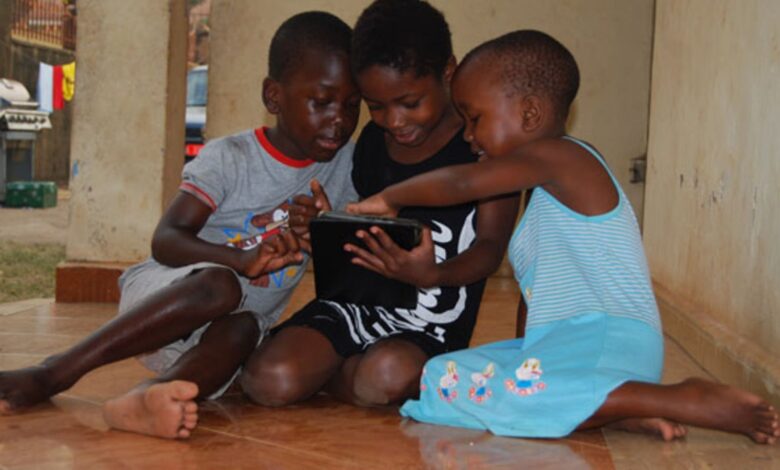How to protect children from online violence in today’s digital world
As the digital landscape continues to evolve, the issue of online violence against children has emerged as a significant concern. A 2023 report by Economic Impact revealed that more than 400 children worldwide have been sexually exploited online and have kept it a secret.

In 2013, when Kagoya (not real names) was 15 years old, her parents gave her a smart phone and the first thing she decided to do was create a Facebook account since it was the trending app among her peers then.
Getting familiar with Facebook, she started chatting with a “boy” who claimed to be 17 years old. After sending each other pictures, a relationship grew. “He sent me a picture that was supposedly him. He started telling me how pretty I was,” she said. As their conversations continued, the boy began asking for more personal photos.
Things escalated when he started sending her explicit images. “He would send me nudes and asked me to send the same,” she shared. Although she was hesitant at first, he reassured her, saying it would be okay and that he wouldn’t share the pictures with anyone.
Despite having little knowledge about sex at her age, she eventually sent him a photo of her breasts. “It was terrifying,” she said.
The situation worsened when he asked to meet in person. “Thank God my parents wouldn’t let me leave home,” Kagoya said. Feeling overwhelmed, she confided in her older sister about the ongoing situation. “I told her everything, and she advised me to delete my Facebook account,” she said.
Although she followed her sister’s advice, the experience left her traumatized.
As the digital landscape continues to evolve, the issue of online violence against children has emerged as a significant concern. A 2023 report by Economic Impact revealed that more than 400 children worldwide have been sexually exploited online and have kept it a secret.
According to the Uganda Communications Commission (UCC) 2022 first-quarter market performance report, there are 23.5 million internet connections in the country.
Additionally, a 2021 survey conducted by the United Nations International Children’s Emergency Fund (UNICEF), ECPAT, and Interpol revealed that 40 percent of children aged 12-17 in Uganda have access to the internet. Of these, more than half go online every day, and 33 percent have access to the internet at least once a week.
In an interview with Charmar News, Raising Voices Communications Manager Tabitha Suubi explained that online violence against children manifests in different ways. One major issue is the targeting of children by adults for sexual purposes.
“Predators often use social media, gaming, and messaging platforms to approach children, sometimes presenting gifts as bait to coax them into sharing explicit images or videos. More disturbingly, many children may face threats or blackmail, which can force them into engaging in sexual activities,” she noted.
Another significant concern is the exposure of children to harmful content that can affect them psychologically. Many children come across distressing material, including violence, misogyny, and xenophobia, which can leave lasting emotional scars. Suubi emphasized the dangers of misinformation, particularly content that incites self-harm and suicidal thoughts.
Suubi noted that children experience both sexual and emotional violence online. She revealed that many children are pressured to share nude photos with supposed friends or strangers. “Some are lured into physical meetings that result in sexual abuse,” she said.
She further advised caregivers to be vigilant for signs of online abuse. “Behavioral changes, such as sudden withdrawal from social interactions or secretive online habits, can indicate that a child is struggling. Emotional signs, such as increased anxiety or fear related to online interactions, should also raise concerns, as well as physical symptoms like sleep disturbances or unexplained health complaints,” said Suubi.
“It’s imperative that they create a safe environment for children. Open dialogue about the dangers of internet use, including cyberbullying and online predators, is essential. Parents should maintain ongoing conversations with their children about online safety and establish parental controls to limit access to inappropriate content,” she added.
Emmanuel Keeya, a cyber-security expert noted that children are increasingly exposed to harmful content, especially on social media platforms.
“Criminals record and distribute videos of minors being exploited, often involving very young children. Despite some platforms like X (formerly Twitter) attempting to combat this issue, others, like Telegram, struggle to control harmful content effectively” he stressed.
It should be noted that on August 22, 2024, The Ministry of Education and Sports launched the Digital Agenda Strategy where students in Basic and Secondary level schools were allowed to have mobile digital devices.
In light of the government’s decision to allow ICT devices in schools, Keeya emphasized the importance of safety measures.
“Schools should provide standardized devices and use customized operating systems to limit access to harmful content. Education and awareness about safe device usage are also crucial,” said Keeya.
To further improve safety for children online, he listed several effective solutions, including AI and machine learning for content moderation and PhotoDNA technology from Microsoft, which scans for illegal images. “These tools are crucial in identifying and preventing online abuse,” he stated.
Education Ministry Spokesperson Dennis Mugimba revealed that the ministry is working on policy standards to regulate digital tools in schools, outlining roles for schools, teachers, learners, parents, internet service providers and device providers.
“Until the said policy guidelines are in place, handheld mobile devices such as phones, tablets are not allowed for use by learners in school premises. School desktops and laptops within the computer laboratory remain the preferred choice of utilisation under a common user facility arrangement to prevent undue financial burden on parents,” he said.
Sarah Mugisha, a mother of two teenagers revealed that parenting in the digital era comes with a lot of pressure as children are very active on social media.
“I was terrified at first when I realized how much time they spent on their phones. The internet is a powerful tool, but it can be dangerous if not used properly. However, I make sure to talk to my children regularly about their online activities. We discuss what’s safe, what’s not, and I encourage them to come to me if they ever encounter anything suspicious or upsetting,” she said.
She further noted that installed parental control apps on their devices that monitor their browsing habits and restrict access to harmful content.
“I’m not trying to invade their privacy, but I do occasionally check their social media accounts. You can’t leave everything to chance. You have to be involved and aware,” she added.
For Peter Mukasa, head teacher of West Herts College Kakiri, the integration of technology into the classroom means schools have a responsibility to ensure that the technology introduced is used safely.
“All of our school devices have strict firewalls and filters. We block inappropriate sites, and students can’t download apps without permission,” he said.
Beyond technological solutions, Mukasa noted that education plays a crucial role. “We don’t just block access; we educate our students about online risks. We teach them topics like like cyberbullying, sextortion, and online grooming. Our goal is to teach students to be smart digital citizens. We want them to know what to do if they’re approached by strangers or if they see harmful content.”
He added, “In this day and age, schools and parents need to work together. No single solution will solve the problem, but by combining technology, education, and parental involvement, we can help keep our children safe.”







